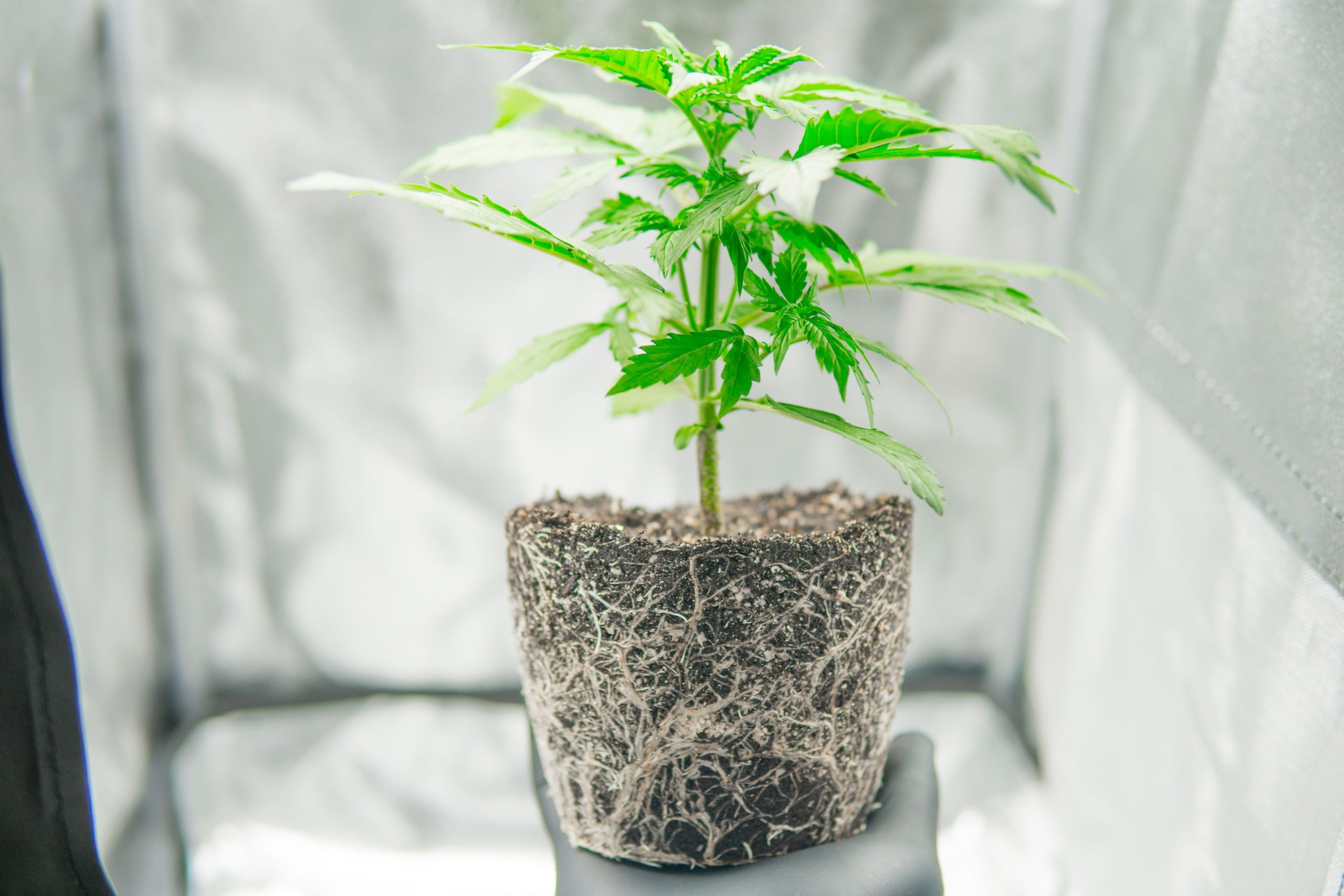Whether you’re just getting started with growing cannabis plants or you’ve been in the game for awhile, you know that it can be tough to move plants from one pot to another. Just like people, sometimes, when your plants grow, they’ll need a new environment to help them thrive.
As a grower, you likely plant quite a few seeds in a small-ish pot when you’re getting started with growing new plants, and it’s likely that you don’t know whether you’re planting males or females. Once you see how many plants in your initial pot begin to grow, you’ll get an idea of how many transplants you need to make so your plants can grow comfortably.
Why You Need To Transplant Your Cannabis Plants
Cannabis plants have a root system that needs room to grow. When your plants don’t have enough room, the roots can’t give the plant all that it needs. This can result in a plant with less-than-optimal growth, or even a dead plant.
When you provide your plant with the room it needs for its roots to stretch out, you’re giving your plant the best chance at growing and thriving. The initial size of your seedling can’t tell you how large your plant will grow. Typically, your cannabis plant’s roots will grow as large as the container you put it in (much like a goldfish will grow to reflect the size of it’s tank).
Getting Started
It can be tough to decide how big of a pot to use when you begin planting your cannabis plants, as you want to be sure to give your plant the room it needs to thrive while also conserving soil for other pots. Most cannabis growers recommend that you start in either 1-gallon or 4-inch pots during the seed germination process.
Transplanting Your Plants
After a few weeks of growing your seedlings, it will be time to transplant them to a new pot where they’re able to expand their root systems to their full potential.
You’ll need to watch your plants closely to determine when it’s time to move them into a new container. Usually, most growers find that the first transplant makes the most sense one to two months after seed germination.
After you transplant your plants to a new pot, you’ll want to keep a close eye on them to ensure that they don’t become rootbound. If you see that your transplanted plants are showing signs of a nutrient deficiency, their flowers are no longer growing, or the new growth appears flimsy, it’s possible that you’ll need to transplant again sooner rather than later.
The transplant from the second to third pot typically occurs two to three months after the first transplant. It’s recommended that you put your cannabis plants in a two to five-gallon container for their final transplant.
As a grower, it’s up to you to decide whether you’d like to transplant once or twice. Some growers skip the initial transplant and go straight to the largest container.
Knowing When to Transplant
While you can rely on rough timelines and keeping an eye out for signs of a rootbound plant to decide when it’s time to transplant, there are a few other indicators that you’ll want to watch for to help you know when your cannabis plant has outgrown its home.
First, you’ll want to watch your plant’s height:
- Plants that are up to 6 inches tall generally thrive in 4-inch pots.
- Plants that range from 6 to 12 inches do best in a 1-gallon container.
- Plants that are one to two feet tall thrive in a 3-gallon container.
- Plants that are between 2 and 3.5 feet tall do best in a 5-gallon container.
- Plants that are 3.5 feet to 5 feet tall need a 10-gallon container.
- Plants that are over 5 feet tall need at a least a 20-gallon container.
You’ll also want to take a look at the number of leaves your plant has sprouted. Usually, a plant is ready for it’s first transplant after the 4th or 5th sets of leaves have sprouted.
Outdoor plants tend to grow larger than indoor plants. Most indoor plants thrive in a 5-gallon container, and don’t need to be transplanted again after they’ve made it to the 5-gallon container stage.
The Transplant Process
If you feel nervous about starting the process of moving your cannabis plants from one pot to another, don’t worry–it’s normal! You’ve put a lot of work into growing your plants, and you’ll want to take every precaution to make a successful transplant as likely as possible.
- First, make your environment as clean as possible. Wash your hands, put on gloves, and be sure the table or other area you’re using for the transplant process is clean.
- Lightly spritz the soil with water to make it a bit easier to work with.
- Fill the receiving pot with soil, leaving plenty of room for the plant and it’s roots, as well as the soil that will cling to the roots as you go through the transplant process.
- Lightly add additional soil as necessary, but be careful not to pack the soil.
- Keep light low during the transplant process to minimize shock, and water your plant once the process is complete.
Frequently Asked Questions
Can you simply start your cannabis plant in the largest pot?
While it may seem like simply starting your plant in a larger pot makes sense, this isn’t usually a great idea. This can result in your plant getting too much water, and can make it harder for your plant to thrive.
When erring on the side of caution, should you use a bigger or smaller pot?
Always go for the bigger pot if you’re not sure what’s the best fit for your plant. While you don’t want to make a huge jump, going with the next size up if you’re not sure what’s the best fit will have a better outcome for your plant than choosing a pot that’s too small.

